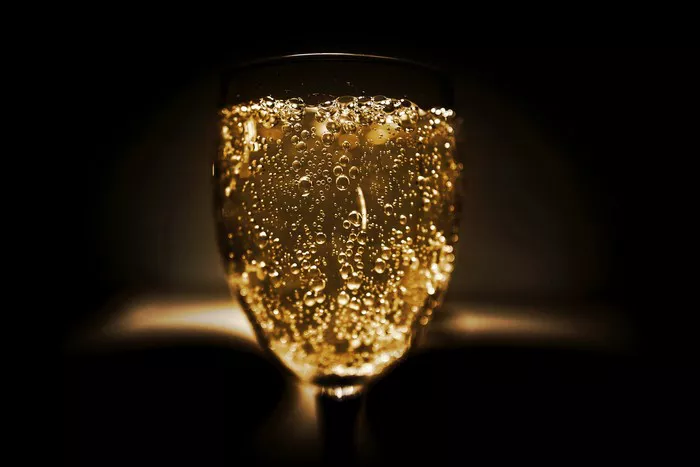Champagne is more than just a sparkling wine; it is a symbol of celebration and luxury. Originating from the Champagne region of France, this effervescent beverage is known for its crisp taste and bubbly texture. It has become a staple at weddings, anniversaries, and various special occasions. However, with its popularity comes questions about its nutritional content, particularly its caloric value. Many people enjoy champagne without considering its effects on their diet. This article explores how many calories are in a standard 750ml bottle of champagne, alongside factors influencing its caloric content.
Understanding the calorie count in champagne is essential for those who monitor their dietary intake. It is particularly relevant for health-conscious individuals, wine enthusiasts, and anyone curious about the beverage’s nutritional profile. While champagne is often viewed as a guilt-free indulgence, knowing its calorie content helps you make informed choices. This article will delve into the average calorie content in champagne, factors that contribute to its calories, and comparisons to other popular beverages.
The Caloric Value of Champagne
Average Caloric Content in Champagne
A standard 750ml bottle of champagne typically contains between 450 to 500 calories. The exact number can vary based on several factors, including the type of champagne, the sugar content, and the production method. For instance, Brut champagne, which is the most common style, generally has lower calories due to its low sugar content. In contrast, Demi-Sec champagne, which is sweeter, contains more calories because of the additional sugar added during the production process.
To understand this better, consider the different styles of champagne. Brut Nature has no added sugar and contains around 450 calories per bottle. On the other hand, Demi-Sec, known for its sweetness, can have up to 500 calories or more due to the higher sugar content. The sugar level plays a crucial role in the overall caloric value, making it important to check the label if you’re concerned about calorie intake.
Factors Influencing Caloric Content
Several factors influence the caloric content of champagne. First and foremost is the residual sugar present in the wine. This sugar results from the fermentation process. During fermentation, yeast converts sugar into alcohol and carbon dioxide. However, some sugar remains unfermented, contributing to the wine’s sweetness and calorie count.
Another significant factor is the alcohol content. Champagne typically has an alcohol by volume (ABV) of around 12%. Higher alcohol content can increase the caloric value, as alcohol itself contains 7 calories per gram. Therefore, the more alcohol in a bottle, the more calories it will have. The fermentation process and the grapes used also play roles in determining both alcohol and sugar levels.
Comparison with Other Beverages
Champagne vs. Other Sparkling Wines
When comparing champagne to other sparkling wines, it generally falls within a similar calorie range. For example, a standard 750ml bottle of Prosecco usually contains around 500 calories, making it slightly higher in calories than brut champagne. Cava, a Spanish sparkling wine, typically ranges between 450 to 490 calories. This comparison highlights that while champagne may be a bit more luxurious, its caloric content is comparable to other sparkling options.
It’s also important to consider still wines. A typical 750ml bottle of red wine can contain around 600 to 700 calories, depending on the grape variety and alcohol content. This makes champagne a lighter option in terms of caloric intake, especially when enjoyed in moderation.
The Role of Serving Size
Serving size also plays a vital role in understanding calorie consumption. A standard serving of champagne is usually about 5 ounces (150ml), which contains approximately 90 to 125 calories. This means that while enjoying a full bottle can contribute significantly to your caloric intake, savoring a single glass allows for a more manageable amount. For those who enjoy champagne but want to maintain their diet, paying attention to serving sizes is essential.
See Also: Is Chardonnay a Dessert Wine?
Health Considerations
Champagne and Moderation
Like any alcoholic beverage, moderation is key when it comes to enjoying champagne. While it can be a delightful addition to celebrations, excessive consumption can lead to unwanted calorie intake and potential health issues. The Centers for Disease Control and Prevention (CDC) recommends that adults should limit alcohol intake to moderate levels. For women, this means up to one drink per day, and for men, up to two drinks per day.
Potential Health Benefits
Interestingly, champagne also offers some health benefits when consumed in moderation. Research suggests that certain compounds found in champagne, particularly polyphenols, may have positive effects on heart health. These antioxidants can help improve circulation and lower blood pressure. However, these benefits should not be a justification for excessive drinking.
Conclusion: Making Informed Choices
In conclusion, understanding the caloric content of champagne is crucial for making informed decisions about its consumption. A 750ml bottle typically contains between 450 to 500 calories, influenced by factors such as sugar content and alcohol level. While champagne can be enjoyed as part of a balanced diet, it’s essential to consume it in moderation. By being aware of serving sizes and caloric intake, you can enjoy this celebratory drink without compromising your health goals. Whether you’re toasting at a wedding or enjoying a quiet evening at home, knowing the nutritional content of your drink can enhance your appreciation of this elegant beverage. Cheers to making mindful choices.
You Might Be Interested In:


